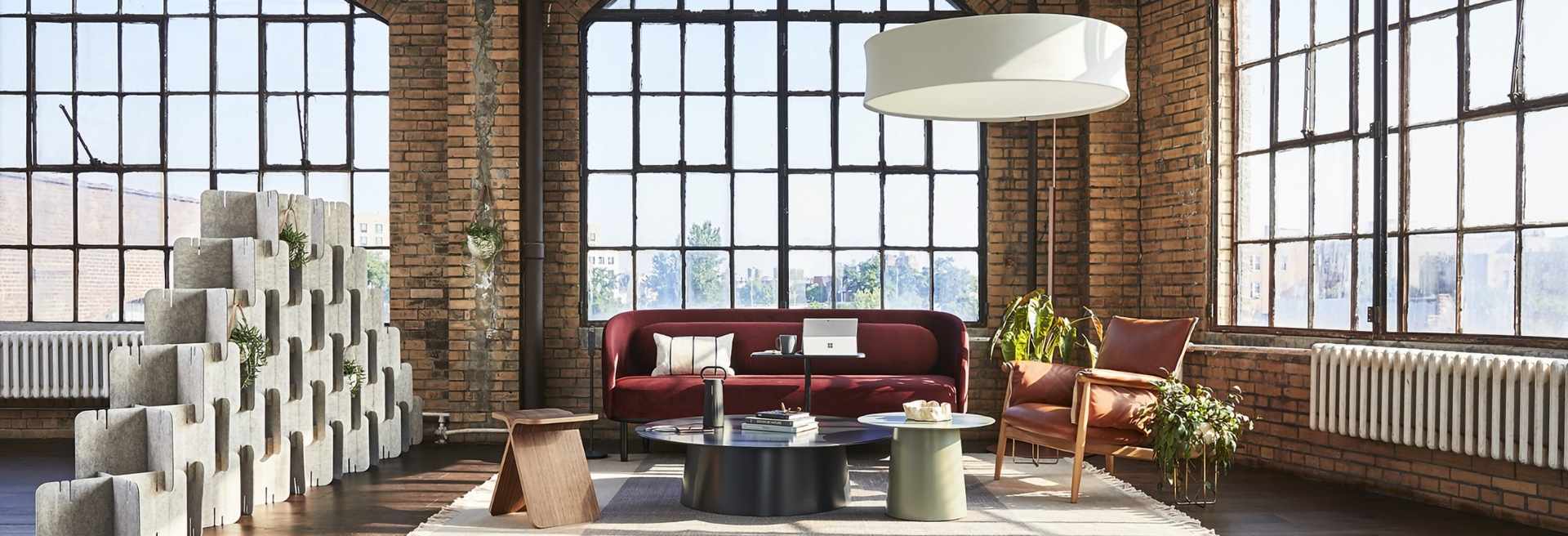According to Steelcase Vice President of Workplace Insights Dr. Tracy Brower, PhD, MM, MCRW, a panelist at McCoy Rockford’s A NEU Conversation, roughly 30% of the workforce experiences some sort of cognitive, social or age-related difference in the way they perceive and relate to the world. While some of these differences may be accompanied by a diagnosis — such as autism or attention-deficit/hyperactivity disorder — many are not. Some minds are simply more productive in highly stimulating environments, while others function best when sensory distractions are minimized. At A NEU Conversation, leading champions of neurodiverse design explained what neurodiversity is — and how architects and designers can create spaces in which everyone is empowered to do their best work.
What is neurodiversity?
Neurodiversity describes the wide range of variance in human brain function, perception and behavior. Rather than viewing neurodivergence as an abnormality, panelists at A NEU Conversation emphasized that variations in human thought and experience are normal and more prevalent than we might imagine. In fact, Brower suggests that as medical and psychiatric diagnostic capabilities improve, we will likely discover that a majority of the population experiences some type of neurodivergence.
“It’s important to recognize that neurodiversity comes in so many different types,” said Brower. “There are cognitive, social, and sensory differences, as well as differences in the way we think.”
Panelist Julie Gauthier, IIDA, LEED AP, Managing Principal and Associate Principal at Perkins+Will, explained cognitive variations as a graph to demonstrate neurotypical and neurodivergent differences. Those who identify as neurotypical, she said, fall within an expected range of sensory and cognitive experience, whereas neurodivergent minds are likely to spike above or below what are considered normal ranges. She noted that these “spikes” often evolve throughout an individual’s lifetime.
The human and business benefits of neurodiverse design
Brower argues that neuroinclusive design is not only an ethical imperative, but also a smart decision for businesses looking to retain and attract top talent — and it’s easy to see why. Investing in spaces designed to accommodate a spectrum of experience and working styles sends a visible message to employees that their needs and wellbeing are valued. When team members feel supported, they are more likely to feel a sense of loyalty to their companies.
Panelist Beth Ann Siegel, RID, WELL AP, Senior Vice President of Corporate Workplace Strategy at JLL, noted that decision-makers are starting to have conversations about how best to support employees early on in the design process. Rather than simply seeking to attract talent with “fun” café areas and game-filled break rooms, executives are asking how they can create spaces that empower employees to be successful, regardless of how they think and work.
Striking a balance between universal and targeted strategies
Rather than attempting to create spaces with universal appeal, designers should seek to implement targeted zones that support as many differences as possible. Those who are hypersensitive to sensory stimulation, for example, may thrive in quiet, cocoon-like environments that maximize privacy and minimize distraction. Those who are hyposensitive may need open work areas that encourage connection to achieve optimal productivity. And a dyslexic thinker may appreciate graphic signage that incorporates icons as well as alphanumeric symbols. The key is to offer variety and choice.
Flexibility and control are also crucial components of neurodiverse design best practices. The hyposensitive worker, for example, may benefit from the ability to choose an open space filled with music or ambient noise, while someone diagnosed with autism may value the freedom to raise or lower light levels as needed. The goal is to enable all team members to adjust their surroundings to suit their unique needs, rather than expecting individuals to conform to a one-size-fits-all approach.
Implementing neuroinclusive design practices
While spaces can certainly affect culture, change starts from the top. As c-suite executives become more aware of the benefits a neurodiverse workforce can bring, they will be more receptive to plans that emphasize inclusivity. Research suggests, for example, that teams with neurodivergent professionals in some roles can be 30% more productive than those without them.1
With buy-in from leaders, architects and designers can help to shape conversations around neurodiversity. Panelists at A NEU Conversation suggested a range of resources to assist these teams, such as Perkins&Will’s “Blueprint for the Mind”2, which offers advice on how to understand, talk about and design operational strategies for neuroinclusive work environments. Steelcase’s “Blueprint for Inclusive Workplaces of the Future”3 provides an overview of the company’s research on neuroinclusivity, as well as recommended actions for key stakeholders.
Want to learn how McCoy Rockford can help you outfit interiors that support all team members? Contact us to get started.
Sources:

